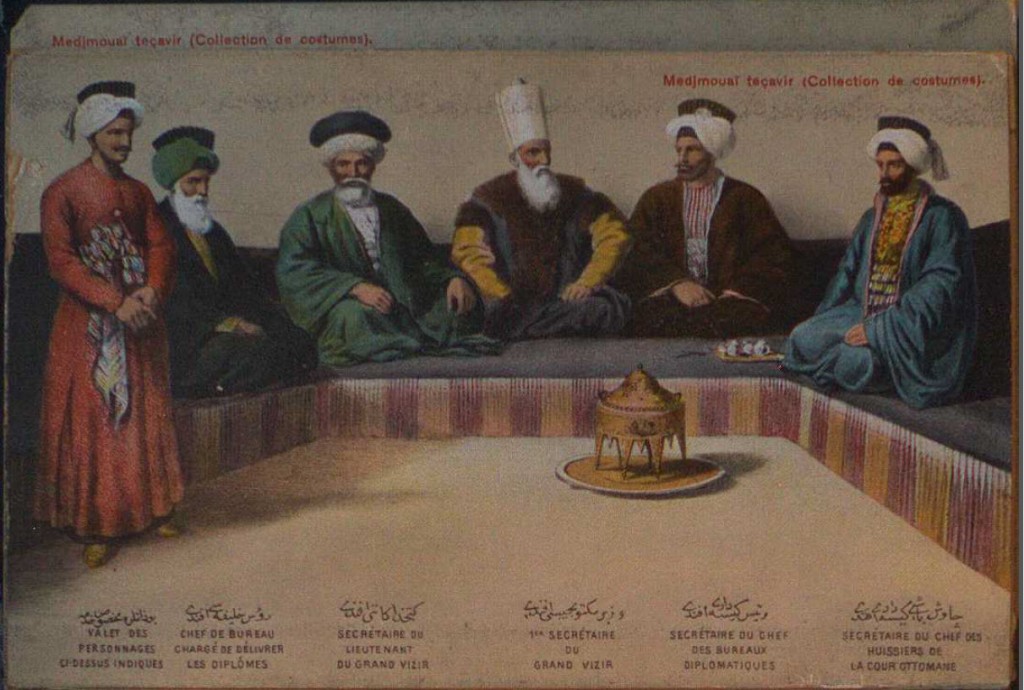Please note the change of location:
the screening will be held in room MOR 328 (3rd floor)


OISO, a major reference tool for Islamic Studies as it covers the whole Muslim world from Indonesia to Morocco and everything in between. The reference tool’s usefulness just increased with the recent publication of Dr. Walter Young, a recent IIS graduate. His article entitled “Uṣūl al-fiqh” provides a concise overview of the subject as well as a splendid bibliography for further reading.
To access the article you must login to your McGill account (or your local institution): Uṣūl al-fiqh.
Walter’s PhD thesis The Dialectical Forge: proto-system juridical disputation in the Kitāb Ikhtilāf al-‘Irāqiyyīn (2 vols.) is freely accessible via McGill’s escholarship platform.
Congratulations, Dr. Young!
Institute of Islamic Studies Tehran Branch publications
A recent ‘discovery’ in the Islamic collection in Rare Books and Special Collections, is a set of Ottoman-French postcards named Medjmouaï teçavir (Collection de costumes). There are 22 postcards with each image portraying a different cultural aspect of Ottoman customs and dress attire. Unfortunately, there is no date on the cards themselves but we can assume these date from the late 19th or early 20th centuries. For further reading on Ottoman costumes, have a look at:
For further reading on Ottoman costumes, have a look at:
Salman, Fikri. 2012. Türk kumaş sanatı. Erzurum: Atatürk Üniversitesi, Güzel Sanatlar Fakültesi.
Fenerci Mehmed. 1986. Osmanlı kıyafetleri: Fenerci Mehmed albümü = Ottoman costume book. İstanbul: Vehbi Koç Vakfı.
Hamilton, Alastair. 2001. Arab culture and Ottoman magnificence in Antwerp’s Golden Age. London: Arcadian Library.
 Sevin, Nureddin. 1973. On üç asırlık Türk kıyâfet târihine bir bakış. [İstanbul]: Devlet Kitapları.
Sevin, Nureddin. 1973. On üç asırlık Türk kıyâfet târihine bir bakış. [İstanbul]: Devlet Kitapları.
Yılmaz, Hale. 2013. Becoming Turkish nationalist reforms and cultural negotiations in early republican Turkey, 1923-1945. Syracuse, New York: Syracuse University Press.
As well as: http://www.midafternoonmap.com/2014/02/ottoman-hats.html
Hi friends! Issues from 1892-1941 of al-Hilal, the famous cultural journal founded by Jurji Zaidan have recently been digitized an are now available freely for your reading pleasure, here.
Ignaz Goldziher (Ignác Goldziher) (1850-1921), the famous Orientalist (in the pre-Said definition of the word) and scholar of Islamic Studies. He was born in Budapest in 1850 and has been recognised as one of the founders of Islamic studies, along with Theodor Nöldeke and Christiaan Snouck Hurgronje.
Discovered in the stacks in a bound collection of offprints are a number of Goldziher’s signatures. The signatures are throughout the articles, complete with dedications some of which are to the philologist, René Basset who is also suspected as being the binder of these volumes. The dedications are written in German, Arabic and French.
In related news, the Oriental Collection of the Hungarian Academy of Sciences has released “The Goldziher correspondence of Budapest – more than 13000 letters related to Ignaz Goldziher.” The letters are searchable, here.
Below are some of the signatures in multiple languages for your viewing pleasure.
Further reading: Journal of the American Oriental Society, Vol. 42 (1922), pp.189-193.
Nöldeke, Theodor, Ignác Goldziher, and René Basset. 1871. Mélanges. (Held in the Islamic rare books collection at Rare Books and Special Collections, 4th floor McLennan Library.)
Hi friends!
There are plenty of CfPs for this year’s upcoming MESA conference in Washinton, DC, 22-25 Nov. Included among the CfPs are three current McGillians and one recent graduate. For further information take a look at MESA Member Calls for Participation.
Hope to see you in Washington in November!